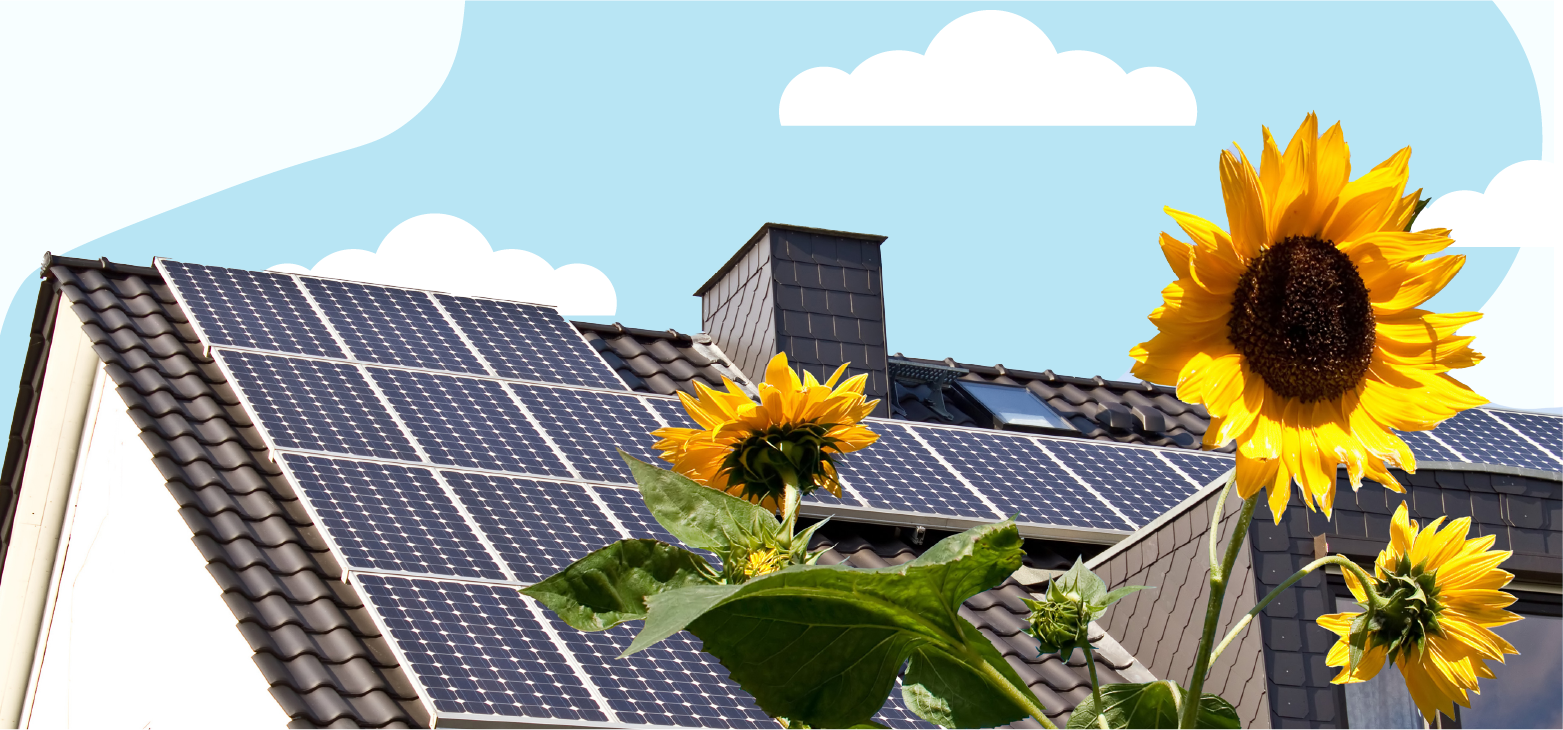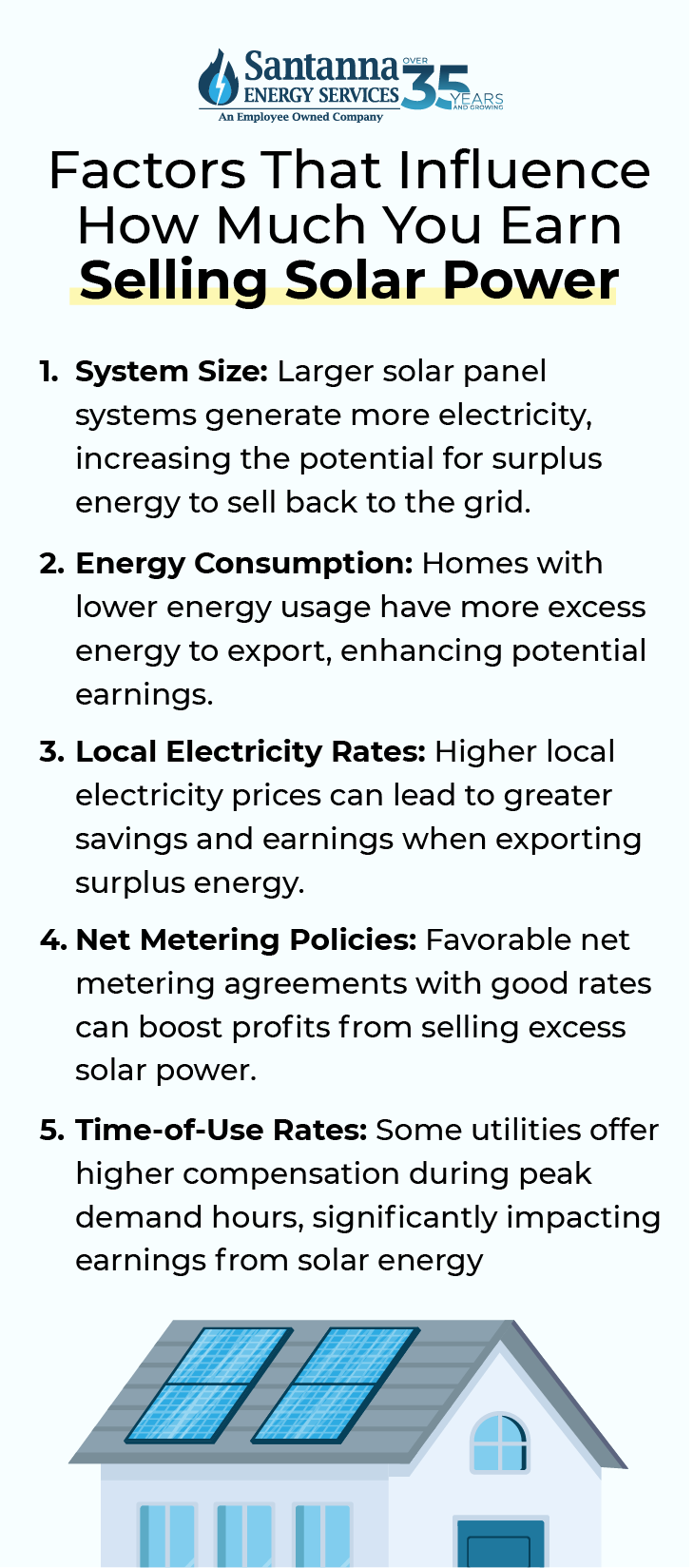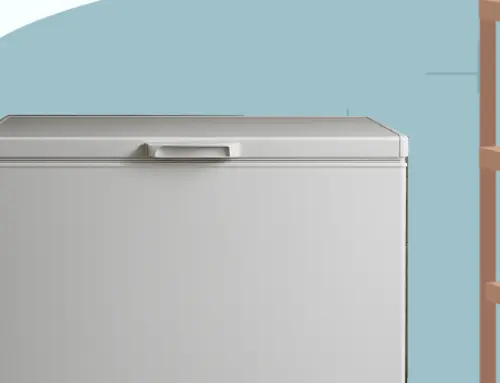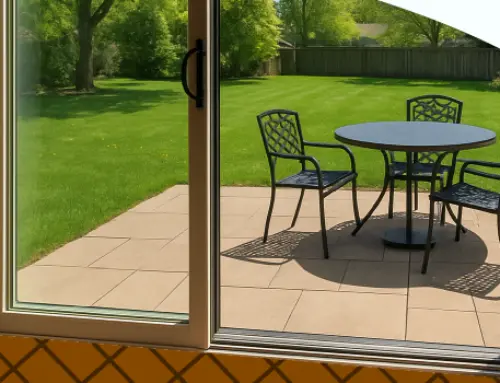Can People Sell Surplus Solar Electricity Back to Electric Companies?
by Tyler Castle
18.3 min read

Selling surplus solar electricity back to electric companies is a game-changer for homeowners looking to maximize the benefits of their solar energy systems. Beyond financial incentives, selling solar power back to the grid plays a crucial role in accelerating the transition to clean, renewable energy sources.
As more states and utility companies refine their energy policies, many homeowners are asking if they can sell electricity back to the grid, but the answer depends on the location, utility provider, and the type of solar program available. Understanding the process and the long-term benefits of selling solar electricity has never been more important. This guide explores everything you need to know about selling electricity back to the grid.
What Does Selling Solar Power Back to the Utility Company Mean?
When a solar energy system produces more electricity than is consumed on-site, the surplus can be fed back into the utility grid. This process enables the utility company to distribute the excess clean energy to other consumers, effectively reducing the reliance on fossil fuels and lowering overall carbon emissions. In return, the solar energy producer typically receives credits or payments, depending on local policies and agreements.
What is Net Metering?
Net metering is a billing system that allows homeowners or businesses with their own electricity generation—typically solar panels—to send excess electricity back to the grid (or electric companies) and receive credit for it.
Here’s how it works: During the day, your solar panels make more electricity than you need. Instead of wasting it, you can sell the extra solar power you make back to the grid or electric companies for a profit.
Your utility company keeps track of the extra power you send and gives you credits on your bill. At the end of the month, you only pay for the “net” electricity you used—meaning the difference between what you used and what you sent back.
The idea of net metering and selling solar power isn’t a new idea. For the past 25 years, homeowners, farms, and businesses have been installing solar panels on their properties for pay offs such as tax benefits, the hope of lower energy bills, environmental concerns, or wanting to produce their own electricity.
Net metering not only helps lower electric bills but also boosts the economy by increasing demand for solar energy, creating jobs for installers, electricians, and manufacturers. Strong net metering policies have played a key role in the growth of the solar industry, which now employs over 230,000 American workers.
Can People Sell Surplus Solar Electricity Back to Electric Companies?
The short answer is yes, individuals can sell surplus solar electricity back to electric companies. This is commonly facilitated through net metering programs, where the utility company credits the solar producer for the excess energy supplied to the grid. The specifics of these programs, including compensation rates and eligibility criteria, vary by state and utility provider.
Advantages of Selling Surplus Solar Electricity Back to Electric Companies
If you’re considering selling your surplus solar back to electric companies, there are a few pros to this task that make it a worthwhile investment.
First off, net metering often offsets your energy bills by crediting you for the surplus power you export to the grid. This provides more opportunity to save on your electricity bills in the long run.
Another benefit of selling surplus solar electricity back to electric companies is having an energy safety net in times of poor energy production. Selling excess energy ensures that when your panels aren’t producing enough (like at night or on cloudy days), you can draw from the grid without high costs. In the same way, without net metering, homeowners might need costly solar battery storage to avoid wasting excess energy. Selling surplus solar electricity back to the grid eliminates that need.
Another positive to selling surplus solar back to electric companies is that the extra energy contributes to a more balanced and resilient electricity grid, reducing strain during peak demand. By supplying surplus energy during these high-use periods, distributed energy sources help prevent blackouts, reduce the need for fossil-fuel backup power plants, and stabilize voltage levels.
One last positive of selling surplus solar to electric companies is no maintenance costs for grid collection. Unlike private energy storage solutions, grid-tied systems don’t require ongoing maintenance or replacement costs for battery storage.
Disadvantages of Selling Solar Electricity to Utility Companies
Like anything else, selling solar energy to electric companies does come with its share of disadvantages. For example, how much you make from selling your electricity can vary from state to state. Many states have reduced net metering rates, offering less than the retail price per kWh for solar exports, reducing profitability. In extreme cases, some states, restrict net metering or it’s unavailable all together.
Another potential downfall is that some utility companies charge grid connection fees or impose limits on how much solar energy can be exported. Policies can change, affecting long-term financial benefits. If your utility company offers low compensation rates, it may take longer to break even on your solar investment.

What Are the Benefits of Selling Solar Power Back to the Grid?
Selling solar energy back to the grid has its advantages. Here are some of the most common if you’re considering selling solar power:
1. There’s Financial Benefits
One of the biggest advantages of selling solar energy back to the grid is the possibility of lower energy bills. By offsetting grid electricity with solar power, homeowners can reduce or even eliminate their monthly energy bills.
While solar panel systems do have a high upfront cost, many solar panel systems pay for themselves within 8-10 years through energy savings and incentives. After that, the energy you sell to the grid becomes pure profit making for a worthwhile return on investment. As another benefit, some states offer feed-in tariffs (FiT) or sell-back programs where utilities pay homeowners for excess solar energy at a predetermined rate, providing an additional revenue stream.
In the same way, homes with rooftop solar panel systems tend to sell for 4.1% higher than similar properties without solar, adding an estimated $9,300 to the value of a median-priced home. Additionally, homes with solar panels have a 24.7% greater chance of selling above their asking price, making them a more attractive investment for sellers.
As another positive to selling solar power, homeowners can protect themselves from market volatility. Homeowners who generate and sell solar power lock in lower energy costs and reduce their dependence on the energy market by producing their own energy.
Lastly, many states and the federal government offer solar tax credits and rebates that further enhance the financial benefits of selling solar power. For example, The Residential Clean Energy Credit allows for up to 30% of your new solar energy system to be paid for if you install your system anytime between 2022 through 2032.
2. Environmental Benefits
A second advantage of selling solar energy back to the grind comes from the numerous environmental benefits. For instance, for every kWh of solar energy fed into the grid, this reduces our dependence on fossil fuels, lowering greenhouse gas emissions and slowing climate change.
In the same way, more solar energy on the grid means less demand for coal and natural gas plants, leading to cleaner air and water for local communities. Distributed solar power also helps balance supply and demand, reducing strain on power plants and preventing blackouts or grid failures.
Similarly, by feeding solar power into the grid, homeowners help their communities transition to cleaner, renewable energy sources instead of relying solely on centralized power plants. This makes for a cleaner and brighter future for the planet!
3. Energy Security & Independence
Selling solar back to the grid helps drive the world towards energy independence! By feeding clean energy into the grid, solar users reduce strain on the utility infrastructure, making it more resilient against power outages and fluctuations. This decentralized energy contribution helps stabilize supply during peak hours and improves overall energy security for entire communities. When paired with solar batteries, homeowners can store excess energy for use during power outages, peak pricing hours, or nighttime for better energy security.
Lastly, those who choose to sell solar power gain skills for better energy monitoring in their home. By monitoring solar production and usage, homeowners can optimize their energy consumption and maximize savings.
4. Community & Policy Incentives
Installing residential solar panels comes with a range of economic and societal benefits beyond just lowering your electricity bill. Some states allow homeowners to earn RECs for the clean energy they produce and sell them separately for additional income. These credits can often be sold separately, providing an additional stream of income.
On a broader scale, increased adoption of solar supports job growth in the clean energy sector—creating opportunities in installation, system maintenance, and renewable technology innovation.
Additionally, by feeding excess power back into the grid, residential solar users contribute to a more resilient and reliable electricity system, helping prevent shortages and reduce strain during times of high demand.
How to Sell Solar Electricity Back to the Grid
Selling surplus solar electricity back to the grid can be a great way to offset energy costs and contribute to a cleaner power system. However, the process involves several steps to ensure compliance with local regulations and maximize financial benefits. Here’s a step-by-step guide on how to sell solar:
Step 1: Determine Your Eligibility
The first thing you need to do if you’re looking to learn how to sell solar is to check if your state allows net metering or other programs that compensate for excess energy. Regulations vary by state with some states not being eligible at all, so look up your local utility’s policies or visit state energy websites.
Selling Solar Power in Ohio
To be eligible to sell solar electricity back to the grid in Ohio, solar energy must account for 0.50% of the state’s total electricity generation. Solar systems under 6 kW are required to track and report total energy production using a readable meter or inverter. The eligibility start date is determined by the month in which the application is submitted to the Public Utilities Commission of Ohio (PUCO).
Selling Solar Back to the Grid in Illinois
In Illinois, the current net metering program allows customers of major utility companies (Ameren, ComEd, and MidAmerican) to receive full retail credits for any extra solar energy they send to the grid. If your solar system is installed and running by December 31, 2024, you’ll qualify for full net metering benefits for the lifetime of your system. However, starting January 1, 2025, new solar customers will only receive partial credit for their excess energy. The credit amount will be based on the utility’s supply rate, which is what they pay for electricity from wholesale suppliers—typically lower than full retail value.
Selling Solar Power in Pennsylvania
In Pennsylvania, homeowners with solar systems up to 50kW can participate in net metering, which lets them sell extra electricity back to the grid. In return, they receive credits at the full retail rate, helping to lower their energy bills.
As always, before you start selling solar power, contact your utility company to confirm participation requirements, rates, and interconnection policies. Verify if your home is in a net metering-approved area and if your solar system meets the necessary capacity limits often between 100% and 150%.
Step 2: Obtain Permits and Approvals
If you’re wondering how to sell solar back to electric companies, keep in mind that you’ll need to apply for local building and electrical permits for solar installation to begin your process. In the same way, if you live in a residential neighborhood, if required, you’ll need to get approval from your Homeowners Association (HOA) for your installation as well.
After you’ve received approval, to sell surplus electricity back to electric companies, you’ll need to submit an Interconnection Application to your utility provider to officially connect your system to the grid and partner with a utility to sell your energy to. In some cases, utilities require an engineering study to ensure the grid can handle your solar energy exports.
Once you’ve reviewed and signed an Interconnection Agreement that outlines how your system will connect to the grid and have found a utility to partner with, you’re ready to install your system. Keep in mind that some utilities may charge a grid access fee or other charges to net metering customers—be sure to factor this into your decision.
Step 3: Install a Grid-Tied Solar System
After you’ve obtained all your permits, the next step is to install a solar system that’s tied to the grid. Ensure your solar panel system is grid-connected (not off-grid) to ensure you can send excess power back to the utility.
It’s important to remember that solar systems aren’t cheap to install, and their upfront costs cost quite a pretty penny. Depending on your roof size, the average cost of installing a solar panel system can be upwards of $30,000. Be sure you’re within your means before you make the leap into this investment.
After you’ve decided this is the right path for you, work with a certified solar installer to design and install a system that meets local grid connection standards. Be sure to install an inverter that converts DC (direct current) power from solar panels into AC (alternating current) power for the grid and use a bi-directional (net) meter that tracks energy flow in both directions—so you can properly sell energy back to the grid.
Step 4: Complete Inspections and System Activation
Once your solar system is installed, request a final inspection from local authorities and the utility company. After passing inspections, your utility will give you Permission to Operate (PTO)—you can now start selling electricity to the grid!
Step 5: Monitor and Optimize Your Solar Production
After you’ve had a chance to run and power up your solar system, it’s always a good idea to evaluate opportunities for further optimization. Use an energy monitoring app to track energy production, consumption, and earnings to see where you can get more bang for your buck.
Look for ways to adjust your electricity use in your own home to maximize financial benefits and consider adding battery storage to store excess energy for later use, rather than selling at lower rates if your financials allow you to do so.
Additional Tips for Selling Solar Power
Selling solar energy goes beyond just sending excess power to the grid—it can also be a strategic financial opportunity for homeowners and businesses. Here’s how you can maximize earnings from your solar investment:
1. Earn Additional Income from Renewable Energy Certificates (RECs)
Renewable Energy Certificates (RECs) are tradable certificates that represent the environmental benefits of generating clean energy. Solar system owners can sell RECs separately from their electricity, providing an additional revenue stream.
2. Store and Sell Energy with Battery Storage
Installing a solar battery allows you to store excess energy for later use rather than exporting it immediately. Some utilities offer battery storage incentives or participation in Virtual Power Plant (VPP) programs, where solar owners can sell stored energy back to the grid during high-demand periods for premium rates.
3. Check Local Incentives & Policies
Each state has different rules for selling solar energy, net metering compensation, and REC trading. Some utilities cap the amount of energy that can be sold, while others offer competitive incentives for clean energy generation. Find your state’s local policies and solar buyback programs using the DSIRE Incentives Database.
How Much Money Can You Make Selling Electricity Back to the Grid?
The financial returns from selling electricity back to the grid vary based on many factors. For instance, a typical residential solar panel system might range from 3kW to 6kW, with larger systems producing more power and potentially more excess energy to sell.
Additionally, energy-efficient homes with low consumption can export more electricity, increasing potential earnings.
As a hypothetical example, a homeowner with a 6kW system in a sunny state like Illinois or Pennsylvania might generate about 800 kWh of excess electricity in a month. If their utility offers a net metering credit of 10 cents per kWh, that’s an $80 credit—nearly $1,000 a year in savings or additional income just for producing clean energy.
What Are the Factors That Influence How Much You Earn Selling Solar Power?
Several key factors determine how much you can earn by selling electricity back to the grid:
- System Size: Larger solar panel systems generate more electricity, increasing the potential for surplus energy to sell back to the grid.
- Energy Consumption: Homes with lower energy usage have more excess energy to export, enhancing potential earnings.
- Local Electricity Rates: Higher local electricity prices can lead to greater savings and earnings when exporting surplus energy.
- Net Metering Policies: Favorable net metering agreements with good rates can boost profits from selling excess solar power.
- Time-of-Use Rates: Some utilities offer higher compensation during peak demand hours, significantly impacting earnings from solar energy.

How Much Electricity Does a Solar Panel Generate?
On average, a standard residential solar panel that’s installed in 2025 produces between 350 and 470 watts of power. The electricity output of a solar panel depends on several factors, including its efficiency, size, and the amount of sunlight it receives.
Key Factors That Affect Solar Panel Electricity Generation
One of the most significant factors that affect how much electricity a solar panel produces is its wattage and efficiency. For example, A 400-watt solar panel in a sunny location can generate around 600 kWh of electricity annually, which equals approximately 1.6 kWh per day. In areas with less sunlight, the panel’s energy production will be lower due to reduced solar exposure.
In the same way, it’s no secret that panels in sunnier states generate more electricity compared to areas with frequent cloud cover. Locations with higher solar irradiance receive more sunlight, increasing overall output. Similarly peak summer months generate more energy due to longer daylight hours and stronger sunlight making selling solar more viable in states with year-round sun. Cloudy, rainy, or snowy weather can reduce production, though panels still generate some power in diffused sunlight.
It’s also important to note that a panels angle plays a vital role in its electricity production. Panels facing south at an optimal tilt capture the most sunlight in the U.S. Poorly angled or shaded panels produce less energy. Nearby trees, buildings, chimneys, and dust buildup can block also sunlight and decrease power generation.
Lastly, over time, solar panels degrade at about 0.5% per year, meaning a 20-year-old panel may produce around 90% of its original output. It’s key to keep an eye on your system for signs of damage and opportunities for upkeep.
How Solar Panel Systems Work
Solar panels convert sunlight into electricity, primarily used to power your home. When production exceeds consumption, the surplus energy is exported back to the grid, often resulting in credits or payments through net metering programs.
Through their photovoltaic (PV) cells, these panels absorb sunlight and convert it into direct current (DC) electricity. Since most homes and appliances use alternating current (AC) electricity, an inverter converts the DC power into usable AC power for your household.
During daytime, your solar system immediately powers your home appliances, lighting, and electronics with the electricity it generates. During nighttime or cloudy day use – Since solar panels don’t produce power in the dark, your home will pull electricity from the grid or a solar battery (if installed).
Frequently Asked Questions
Can I Participate in Net Metering if I Live in a Multi-Family Building?
Yes, residents of multi-family buildings can participate in net metering through mechanisms like Virtual Net Metering (VNM). VNM allows energy generated from a shared solar installation to be allocated across multiple units within the building, enabling tenants or condo owners to receive credits on their utility bills proportional to their share of the system. This setup makes solar energy accessible to those in multi-family dwellings.
Do Utility Companies Pay for Excess Solar Energy?
Many utility companies compensate customers for excess solar energy fed back into the grid through net metering programs. The compensation structure varies by utility and region; some offer credits at the retail electricity rate, while others may provide lower rates. It’s essential to review your local utility’s net metering policies to understand the specifics of compensation for surplus energy.
Can You Sell Energy Back If You Go Completely Off-Grid?
No, if you’re entirely off-grid, your solar energy system operates independently from the utility grid, meaning there’s no infrastructure to export excess energy or receive compensation from utility companies. To sell surplus energy, your system must be grid-connected.
Is It Worth Selling Back the Energy to the Grid?
Selling surplus solar energy back to the grid can be financially beneficial, reducing your electricity bills and potentially providing additional income. The overall value depends on factors such as local net metering policies, compensation rates, installation costs, and your energy consumption patterns. Evaluating these elements will help determine the return on investment for your specific situation.
Selling surplus solar electricity back to electric companies offers homeowners a way to lower electricity bills, earn credits, and contribute to a cleaner energy future. While federal incentives, net metering policies, and time-of-use rates play a role in determining your financial benefits, it’s crucial to assess your state’s regulations, your utility’s compensation structure, and your household’s energy consumption before making a decision.
If selling solar energy and installing solar panels sounds like a tall order, there are simpler ways to get the energy you need. With predictable electricity plans, Santanna Energy Services helps you gain more control over your monthly costs.
We offer a range of electricity and natural gas plans designed to suit your lifestyle. Explore our energy plans today and find the best solution for your home’s energy needs!
Tyler is an experienced energy professional, having worked for Santanna Energy Services, for the past four years. He is passionate about renewable energy and believes that diversifying the energy grid is the key to a sustainable future. Tyler is dedicated to supplying consumers with the best possible energy solutions and works diligently to make sure that Santanna can deliver the highest quality service.







